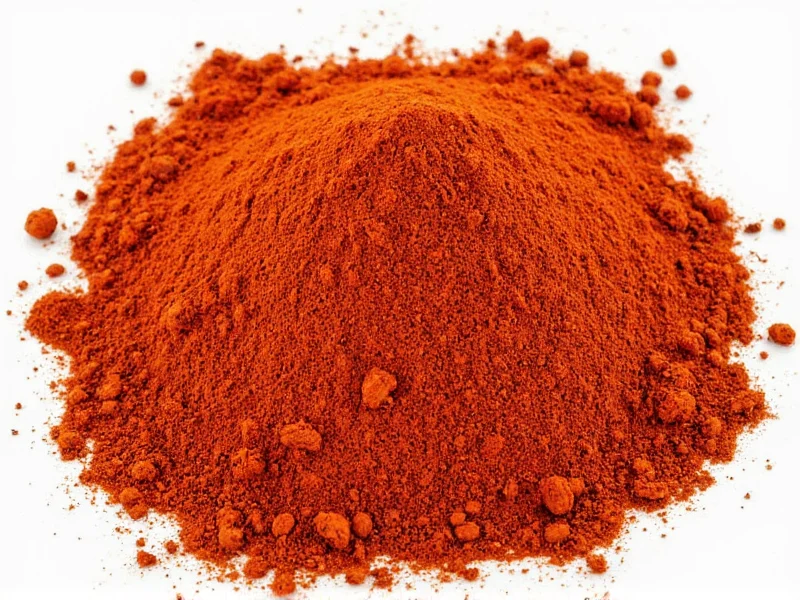No, sweet paprika is not exactly the same as regular paprika, though the terms are often used interchangeably in many markets. Sweet paprika specifically refers to a mild, non-spicy variety made from sweet red peppers, while “regular” paprika typically means the standard sweet variety in most grocery stores—but this can vary by region and manufacturer. Understanding the subtle differences is crucial for achieving authentic flavors in your cooking.
When exploring the world of spices, few questions cause as much confusion in the kitchen as whether sweet paprika and regular paprika are identical. This common culinary query stems from inconsistent labeling practices and regional variations in how these spice terms are used. Let's clarify this once and for all with precise information that will elevate your cooking accuracy.
Understanding Paprika Fundamentals
Paprika is a ground spice made from dried peppers belonging to the Capsicum annuum family. Originating in Central Mexico but perfected in Hungary, this vibrant red spice has evolved into multiple varieties distinguished by flavor profile, heat level, and production method. The confusion between “sweet” and “regular” primarily stems from inconsistent terminology across different markets and manufacturers.
Sweet Paprika: The Flavor Profile
Sweet paprika, sometimes labeled as “mild” or “classic” paprika, delivers a distinctly sweet, earthy flavor with zero heat. Made from sweet red peppers that lack capsaicin (the compound responsible for spiciness), this variety provides rich color and subtle pepper flavor without any burning sensation. Hungarian sweet paprika, considered the gold standard, undergoes a specific drying and grinding process that enhances its natural sweetness.
What “Regular Paprika” Actually Means
The term “regular paprika” creates significant confusion because it lacks a standardized definition. In most American grocery stores, “regular” paprika refers to the sweet variety—essentially making it synonymous with sweet paprika. However, this isn't universally true:
| Region | “Regular Paprika” Meaning | Common Alternative Names |
|---|---|---|
| United States | Sweet paprika (mild variety) | Standard, classic, mild |
| Hungary | Varies by specific classification (often Erdőség) | Erdőség (noble sweet), Csípős (hot) |
| Spain | Often refers to smoked paprika (Pimentón) | Pimentón dulce (sweet), Pimentón picante (hot) |
| United Kingdom | Generally sweet paprika | Hot paprika specified separately |
Key Differences You Should Know
The primary distinctions between sweet paprika and what's marketed as regular paprika come down to three factors:
Flavor Profile
Sweet paprika consistently delivers a mild, sweet pepper flavor. “Regular” paprika in most contexts matches this profile, but some manufacturers might include slightly more pungent peppers in their “regular” blend, creating subtle flavor variations.
Heat Level
True sweet paprika registers 0 on the Scoville scale (no heat). When “regular” paprika refers to the standard grocery store variety, it should also be heat-free. However, some international products labeled “regular” might contain trace heat.
Culinary Applications
Sweet paprika works beautifully in dishes where you want color and pepper flavor without heat—think deviled eggs, potato salads, and Hungarian chicken paprikash. If your “regular” paprika contains even mild heat, it could subtly alter recipes designed for true sweet paprika.
Regional Variations That Cause Confusion
The paprika labeling dilemma intensifies when considering regional differences:
- Hungarian Paprika: Classified into six specific varieties from mild (Édesnemes) to hot (Erős), with no generic “regular” category
- Spanish Paprika (Pimentón): Primarily distinguished as dulce (sweet), agridulce (bittersweet), or picante (hot)
- American Market: Typically offers only “sweet,” “hot,” and “smoked” varieties, with “regular” usually meaning sweet
Substitution Guide for Confident Cooking
When a recipe calls for one type but you only have the other, these substitution guidelines will save your dish:
- If substituting sweet paprika for regular: Generally safe in a 1:1 ratio when “regular” means sweet paprika
- If substituting regular for sweet: Check the label first—if it's truly the standard variety, use 1:1; if uncertain, start with 75% of the required amount
- Never substitute hot paprika for sweet paprika unless the recipe specifically calls for heat
- Smoked paprika requires completely different substitution calculations due to its distinct flavor profile
Practical Tips for Selecting the Right Paprika
Follow these professional recommendations to avoid paprika confusion:
- Read labels carefully: Look for specific descriptors like “sweet,” “mild,” or “hot” rather than relying on “regular”
- Check the ingredients: Pure paprika should list only “ground peppers” without additives
- Consider the color: Sweet paprika typically has a bright red-orange hue, while hotter varieties may appear slightly darker
- Buy from reputable spice companies: Brands specializing in spices provide more consistent labeling
- Store properly: Keep paprika in an airtight container away from light to preserve flavor for up to 6 months
Common Misconceptions About Paprika Varieties
Several myths persist about paprika that contribute to the sweet versus regular confusion:
- Myth: “All paprika is the same regardless of label”
- Fact: Flavor profiles vary significantly between sweet, hot, and smoked varieties
- Myth: “Regular paprika is a standardized term worldwide”
- Fact: Labeling conventions differ substantially by country and manufacturer
- Myth: “Hungarian paprika is always sweet”
- Fact: Hungary produces both sweet and hot varieties with specific regional designations
How to Use Sweet Paprika Effectively in Recipes
Maximize the potential of sweet paprika with these professional techniques:
- Add during the last 5-10 minutes of cooking to preserve its delicate flavor
- Bloom in warm oil before adding to dishes for enhanced flavor release
- Combine with complementary spices like cumin, garlic powder, and oregano
- Use in rubs for chicken, pork, or vegetables for beautiful color without heat
- Stir into mayonnaise or sour cream for vibrant, flavorful dips











 浙公网安备
33010002000092号
浙公网安备
33010002000092号 浙B2-20120091-4
浙B2-20120091-4